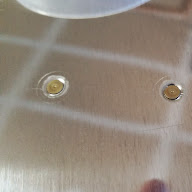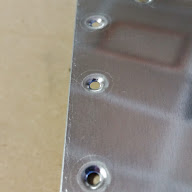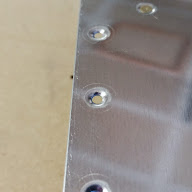Jasper1997
Member
I hope everyone can put me at ease. I am working on the left rudder skin, dimpled using a DRDT. When I flipped it over, I noticed that the holes had somewhat of a white halo. Should I be worried or press on?



Greg, Bird, Larry - Thank you much! The rudder is together for the most part. Next step the dreaded trailing edge.
Pat
Pat,
Do not dread the trailing edge. I had a piece of scrap metal laying around from an old project to use as a back plate. I used a piece of 2" wide 3/8 to 1/2" thick steel longer than the rudder. Clamped down the make shift back plate to the workbench and back riveted following the sequence given in the Vans instructions. Be sure to shim the rudder so that it lays flat on the back plate. It can be done with great results!
What he said.
Plus, proseal the wedge in place with teaspoon size dollops at the end of each stiffener. Cleko it to an angle as mentioned then leave it for a week before riveting. Use a back plate and check every rivet to be sure you're on top of the plate.
RTV works. If I recall the manual mentions using RTV on the stiffeners.
